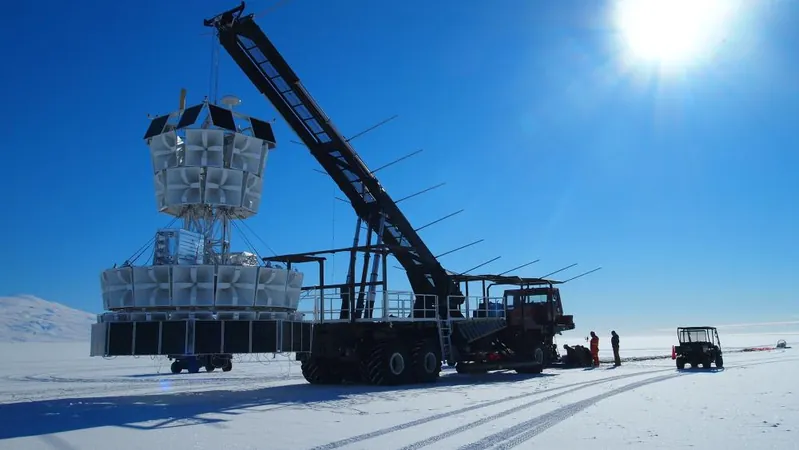
Mysterious Radio Pulses Detected in Antarctica: Are They Signs of Dark Matter?
2025-06-13
Author: Ken Lee
In a groundbreaking discovery, researchers have detected strange radio pulses emanating from beneath the ice in Antarctica. Stephanie Wissel, an associate professor involved with the ANITA team, describes these signals as entering at steep angles—specifically, 30 degrees below the ice's surface.
The intriguing part? These radio waves should have been absorbed after traversing thousands of kilometers of rock before reaching the detectors, making their detection almost impossible. According to Wissel, these anomalous signals most likely do not correlate with neutrinos, the elusive particles typically associated with cosmic events.
Neutrinos, often dubbed as ghost particles due to their negligible interaction with matter, are emitted from high-energy sources like the sun and supernovae. Since they pass through nearly everything without being affected, detecting neutrinos provides unprecedented insights into cosmic events far away—akin to observing the universe at light speed.
Wissel notes that even a single neutrino signal can unlock a treasure trove of information about the universe. Current advancements aim to develop sensitive neutrino detectors, and the ANITA project is leading the charge with a specialized balloon-borne radio detector that flies 40 kilometers above the Antarctic ice.
These radio antennas are focused downward, searching for interactions of tau neutrinos, which generate secondary particles known as tau leptons. These particles decay and produce emissions that can be observed as air showers, offering vital data when analyzed.
Yet, the recent findings refuse to adhere to conventional particle physics. The signals detected by ANITA do not align with any predictions made by existing scientific models. To further validate their findings, researchers sought corroboration from independent experiments like the IceCube and the Pierre Auger Observatory, only to find no similar signals detected elsewhere.
The puzzling nature of these signals lends credence to speculative theories, including the tantalizing possibility of dark matter. While no affirmative evidence exists, the anomalies underscore the ongoing mysteries that linger in our understanding of the universe.
Moving forward, Wissel and her team at Penn State are not resting on their laurels. They are working on a larger, more advanced detector called PUEO that aims to enhance the capability of capturing neutrino signals and possibly unravel these enigmas lurking beneath the Antarctic ice.
It’s a perplexing phenomenon that Wissel described as potentially stemming from unknown radio wave interactions near ice surfaces—a theory they are currently investigating further. With the new PUEO detector on the horizon, there’s hope that it will provide clarity about these anomalies and possibly lead to groundbreaking discoveries in the field of neutrino research.



 Brasil (PT)
Brasil (PT)
 Canada (EN)
Canada (EN)
 Chile (ES)
Chile (ES)
 Česko (CS)
Česko (CS)
 대한민국 (KO)
대한민국 (KO)
 España (ES)
España (ES)
 France (FR)
France (FR)
 Hong Kong (EN)
Hong Kong (EN)
 Italia (IT)
Italia (IT)
 日本 (JA)
日本 (JA)
 Magyarország (HU)
Magyarország (HU)
 Norge (NO)
Norge (NO)
 Polska (PL)
Polska (PL)
 Schweiz (DE)
Schweiz (DE)
 Singapore (EN)
Singapore (EN)
 Sverige (SV)
Sverige (SV)
 Suomi (FI)
Suomi (FI)
 Türkiye (TR)
Türkiye (TR)
 الإمارات العربية المتحدة (AR)
الإمارات العربية المتحدة (AR)